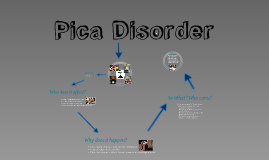

It is generally classified as an eating disorder if one eats non-food items for more than one month. Pica, which comes from the Latin word for magpie (a bird known for eating almost anything), is a worldwide phenomenon – most commonly seen in children – but can occur for some people during pregnancy. Pica is the term used to describe having an intense craving for – and eating – nonfood items, such as soil, clay, laundry starch, ice, ashes, plaster, paint chips, and coffee grounds. However, if you are starting to crave non-food items, you may be experiencing a disorder commonly known as pica. This is perfectly fine as long as you’re sticking to a balanced diet and having enough nutrients to help support your growing baby. We welcome your feedback on our information resources.Having strange food cravings is a normal part of pregnancy – in fact almost 40 percent of women report craving sweet and salty items during pregnancy, such as pickles and ice cream. Last reviewed: December 2020 Next review date: December 2023 Version 2.0 Sources used to create this information are available by contacting Beat.


It may be necessary to contact the emergency services. If you or someone you know has eaten something that isn’t supposed to be eaten, you should seek medical help immediately. Some of the items that people may feel an urge to eat because of pica can be extremely harmful.
Pica treatment cracked#
Often, pica is not revealed until medical consequences occur, such as metal toxicity, cracked teeth, or infections. For a diagnosis of pica, the behaviour must be present for at least one month, not part of a cultural practice, and developmentally inappropriate – generally, it’s not diagnosed in children under the age of two, as it is common for babies to “mouth” objects, which can lead to them accidentally eating substances that aren’t meant to be eaten. Pica is a feeding disorder in which someone eats non-food substances that have no nutritional value, such as paper, soap, paint, chalk, or ice.


 0 kommentar(er)
0 kommentar(er)
